
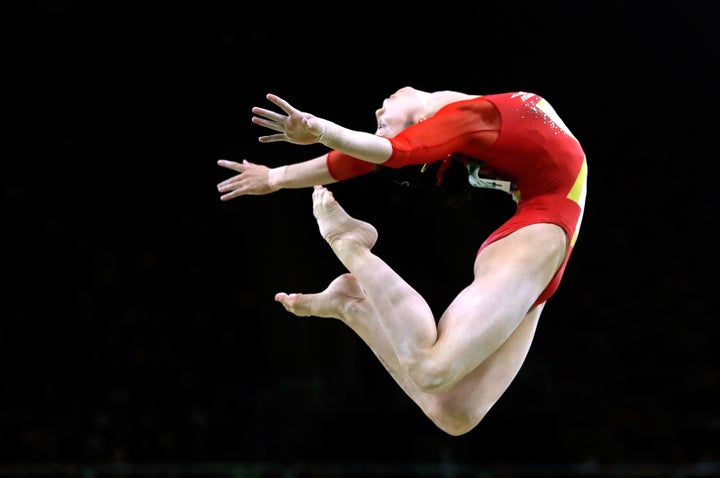
If you watched the U.S. women kick international butt in the Rio Olympics on Sunday, you’re all set to watch them go for gold in the team finals on Tuesday. But after seeing Simone Biles’s atmospherically high vault or Madison Kocian’s slick bars routine, you were a little confused: The commentators kept talking about all the things that were wrong. And then the scores popped up, and the judges had found deductions for routines that, to your eyes, looked pretty much perfect.
At which point you probably turned to the person next to you and demanded, “Where the hell are all these deductions coming from?!”
If that’s you, you’re not alone.
It turns out that in gymnastics ― as in real life ― a woman can never be truly perfect. There are always faults to be found and nits to be picked. But you have to know what you’re looking for.
Here are a few things to watch for if you’re trying to understand why Olympics judges aren’t handing out perfect scores like a bar giving out free drinks on ladies’ night. Most of these you can only spot in the slow-motion replay, but international gymnastics judges are used to watching routines fly past them and picking out what a gymnast got right and wrong.
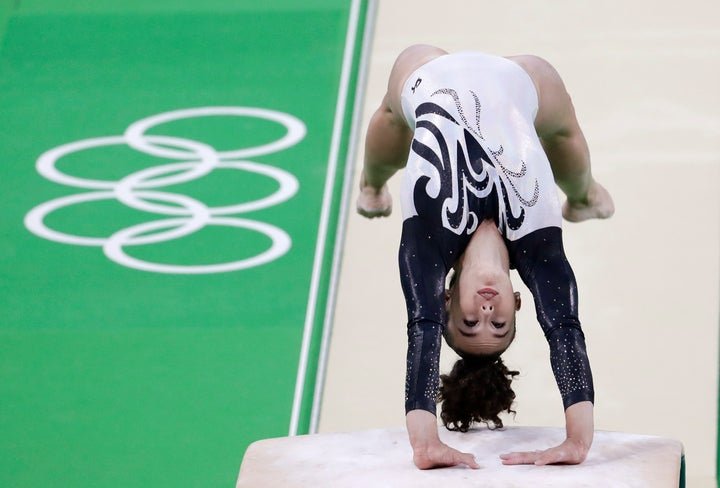
First, the easy stuff: wobbles big and small. This means anything from a little jerk to the side, sometimes called a “balance check,” to a serious break in a gymnast’s body line and interruption of her routine as she attempts to stay on the balance beam. Wobbles are penalized with deductions of 0.10 for little ones, 0.30 for medium ones, and 0.50 for the big ones you’ll find hard to miss. The Code of Points, the 200-plus page rule book for gymnastics competitions, calls wobbles “additional movements to maintain balance.” People who are rooting for a gymnast who’s doing one call them “tiny panic attacks.”
Next up, form errors. This can mean a separation of the legs when they’re supposed to be together, which you’ll find on all four events. Look out for it especially when gymnasts are rotating forward twice ― like in a bars dismount, or in a tumbling pass ― when they’ll often do something called “cowboying.” That means they pull their legs apart and their knees up toward their ears, instead of rotating in the correct tuck position, with their knees together and tight to their chest. This form error can be put down to simple physics: Cowboying makes it easier to rotate faster.
You’ll also find leg separations on bars, where lots of time is meant to be spent in a perfectly straight handstand position. As on vault, you may actually be able to spot those better than the judges can, because the camera gets a different angle than they do, and they don’t use instant replay. Form errors can also mean bent knees when they’re supposed to be straight. You’ll often find these on vault and floor, where gymnasts tend to bend their knees early in anticipation of landing.

Once a gymnast is done being penalized for having her legs too separated, she can move on to being docked points for not having them separated enough. Split jumps and leaps, of which there are a lot in gymnastics, are meant to hit 180 degrees or more, and if they don’t, the deduction can be 0.10 or 0.30, depending on how egregiously un-split the leap is.
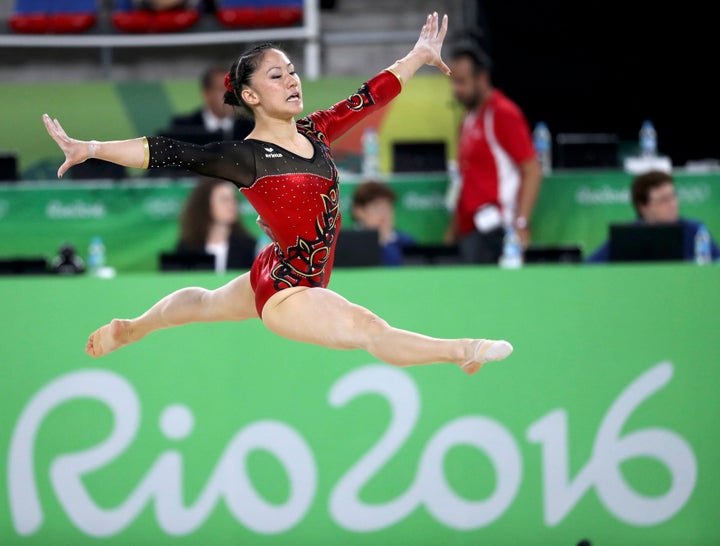
Next, unpointed toes. You’ll find them on bars, where gymnasts often flex their feet to avoid hitting them on the bar, or on leaps and jumps on floor and beam. Each time a gymnast fails to point her toes, she gets a 0.10 deduction.

Another common place for deductions is landing errors, whether it’s a dismount or a tumbling pass. That means steps out or slight hops (0.10 for each one), landing with legs or feet apart (0.10 each time), or landing bent over with a low chest (0.10 or 0.30, depending on how low she goes).
As you can see, it’s a veritable cornucopia of critique, and we’re not close to done.
If a gymnast attempts a twisting element (on floor, vault, beam or in a bars dismount), the twist must be clearly completed, or the judges consider it downgraded, say, from 3 twists to 2 1/2, which means the deduction is taken out of the difficulty score ― a gymnast only get credit for twists she completed, not ones she merely attempted. Watch the feet in twists, to spot whether they’re crossed or separated in the air (0.10) or if they’re not facing straight ahead when she lands, a sign she under-twisted.
Then, there’s missed connections ― the best thing about Craigslist, but one of the hardest things in gymnastics. You’ll notice these most on beam, where gymnasts are required to complete series of tricks without a break between them. According to the code, that means without a stop or a step in between, or obvious loss of balance, or obvious preparation before the next trick. It can be hard to tell where the line is here. A missed connection can be a lot like pornography ― you know it when you see it.
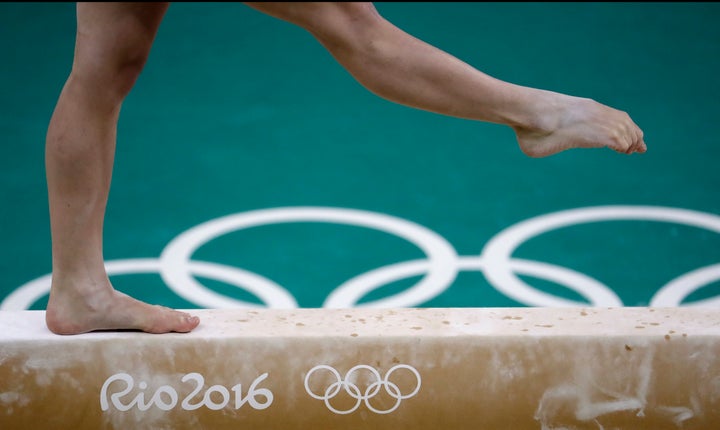
Another mistake that’s easy to spot if you know what you’re looking for is a long pause before attempting a trick, whether it’s a wait before dismount from the beam, or in the corner before a tumbling pass on floor. Each time you do this, you get a deduction of 0.10. On floor, if you wait on two feet too many times, or take small shuffling steps to adjust your position before you tumble, that’s an additional 0.10 each time.
And we can’t overlook insufficient height in flight elements. Those huge release moves ― where a gymnast lets go of the bar and either flies over it or does a somersault and then grabs the same bar again ― are incredibly impressive to watch. Judges are less easily impressed, though, and if the gymnast doesn’t get enough air, they’ll dock her 0.10 or 0.30, depending on how close to the bar she is.
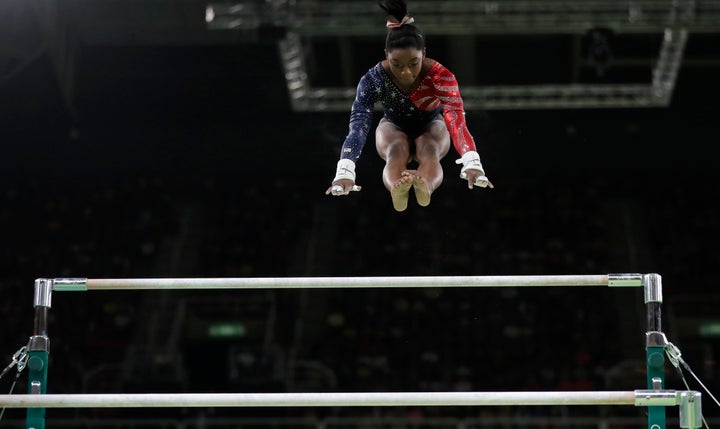
Finally, though this list is far from exhaustive, don’t forget excessive leg tapping. When a gymnast is winding up for a dismount on bars, she’ll often do one or two full swings around the high bar ― those are called “giants.” Notice if, at the bottom of the giant, she lets her feet trail and then “taps” them up using her hips. This move adds more power to the giant and thus to the dismount, but if a tap is too big, the judges will take off 0.10.
These errors are hard to spot, unless you’ve had a lot of practice. But once you know what the judges are looking for, it’s easier to understand how a perfect execution score inevitably eludes every gymnast.
In gymnastics ― as in life ― no one is perfect, and everyone makes mistakes. So, go forth and nitpick ― or, just sit back, ignore the little mistakes, and enjoy the sight of dozens of mindbogglingly strong women trying to defy gravity and, for a few seconds, actually succeeding.
For more Olympics coverage:
